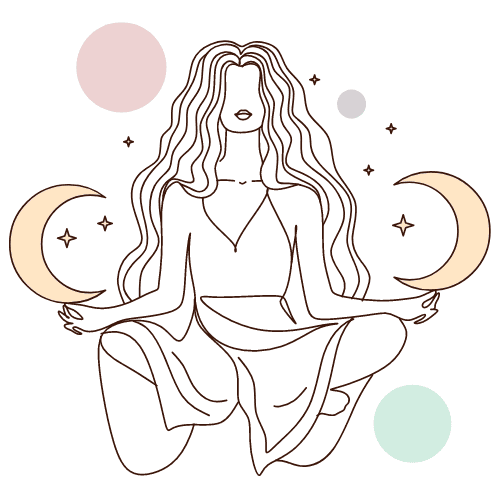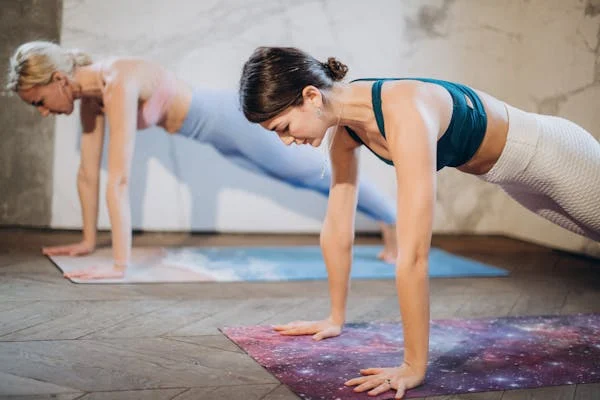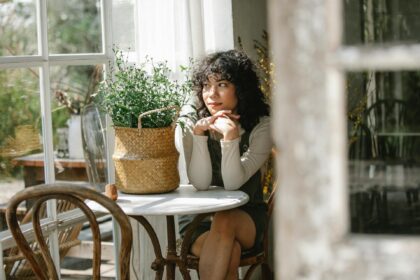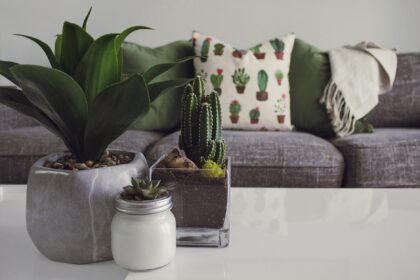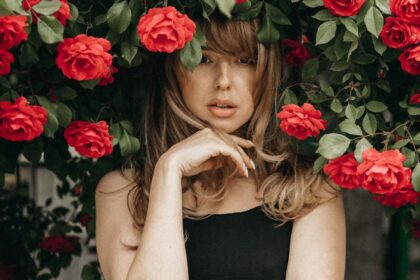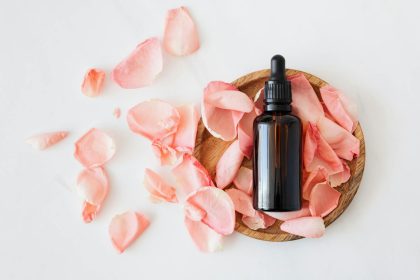Introduction to Yoga: Discover the Path to Holistic Health with Beginner Poses
Hello lovelies! 👋 So, you’re thinking about starting yoga and wondering if it’s worth giving it a try. Some might believe that yoga isn’t as effective as other types of exercise, but I’m here to tell you otherwise. Yoga is not just a 30-minute goal-oriented practice for the body; it’s also a profound exercise for the mind and soul.
Yoga is often regarded as the epitome of holistic exercise because it seamlessly integrates physical, mental, and spiritual practices, promoting overall health and wellness. It helps you cultivate mindful breathing, encourages deeper reflection, and fosters a more balanced way of living. It transforms your health for the better, improving mental clarity, and offers long-term benefits for both your mind and body.
Whether you’re a complete beginner or looking to refresh your routine, these 6 beginner-friendly Yoga poses are perfect for increasing flexibility, building strength, and finding peace before or after a busy day.
Join us as we explore mountain pose, downward-facing dog, warrior I, cobra, child’s pose, and corpse pose to help you embark on a journey towards physical and mental wellness. Let’s dive in and discover how these poses can transform your practice and enhance your overall health.
Begin with Mountain Pose:
Mountain Pose, also known as Tadasana in Sanskrit, is a foundational yoga pose that may appear simple but is actually quite powerful in its benefits. This pose helps improve posture, strengthen the legs and core, and promote better alignment throughout the body. You may reach arms up to the air, or transition from arms up to prayer hands as you inhale from the nose and exhale from the mouth during mountain pose.
Tadasana (Mountain Pose):
- Stand Straight: Feet together or slightly apart.
- Engage Thighs: Tighten thigh muscles for stability.
- Lift Chest: Raise chest, lengthen spine.
- Relax Shoulders: Drop shoulders away from ears, arms at sides.
- Engage Core: Lightly pull belly in for support.
- Breathe Deeply: Inhale through nose, exhale through mouth.
- Hold Pose: Stay balanced for a few breaths.
- Release: Gently relax out of the pose.

As you stand tall in Mountain Pose, take a few deep breaths, you can feel a sense of grounding and stability, connecting you to the present moment and fostering a feeling of inner peace. Next, we’ll move into Downward-Facing Dog, another fundamental pose that will continue to elevate your practice and bring balance to both mind and body.,
Transition from Mountain Pose to Downward-Facing Dog
In Downward-Facing Dog, also known as Adho Mukha Svanasana, you transition smoothly from Mountain Pose by bending forward with a straight back. Allow your hands to guide you down past your knees as you gently bend them and place your palms on the ground. From there, move your hands forward and step your feet back, creating an inverted V shape with your body. This pose stretches the entire back side of the body, from the calves and hamstrings to the spine and shoulders. Downward-Facing Dog also helps to relieve tension in the upper body, improve circulation, and build strength in the arms and legs.
Adho Mukha Svanasana (Downward-Facing Dog):
- Start on Hands and Knees: Hands under shoulders, knees under hips.
- Lift Hips: Tuck toes, lift hips toward ceiling.
- Straighten Legs: Press heels toward the floor.
- Lengthen Spine: Reach tailbone toward the ceiling.
- Relax Head: Let head hang freely between arms.
- Hold Pose: Hold for several breaths.
- Release: Lower knees to the floor to exit.
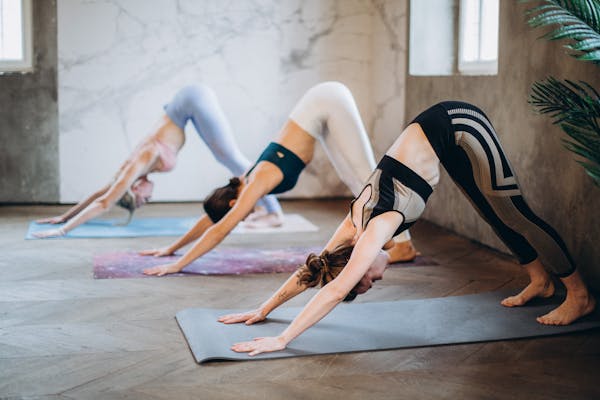
As you breathe deeply in this pose, you can feel a stretch and release in your muscles, allowing for greater flexibility and mobility. Downward Dog, is a foundational posture in yoga that serves as both a transitional pose between sequences and a resting position during practice. During this pose, you can also gently pedal each foot and tune in with your body, stretching each calf accordingly to find your personal comfort level. Transitioning from Downward-Facing Dog to Warrior I will help you continue to build strength and focus in your practice.
Transitioning from Downward Facing Dog to Warrior I
Warrior I, also known as Virabhadrasana I, is a powerful standing pose that strengthens the legs, opens the hips, and improves balance. Begin by stepping one foot forward between your hands, bending the front knee at a 90-degree angle, and keeping the back leg straight.
Virabhadrasana I (Warrior I Pose):
- Start in Downward Dog: Step one foot forward, toes facing slightly out.
- Bend Front Knee: Front knee over ankle.
- Square Hips: Hips face forward.
- Lift Arms: Reach arms overhead, palms facing each other.
- Lengthen Spine: Lift chest, look forward or up.
- Breathe Deeply: Maintain steady breath.
- Hold Pose: Stay for a few breaths.
- Release: Lower arms and step feet together.
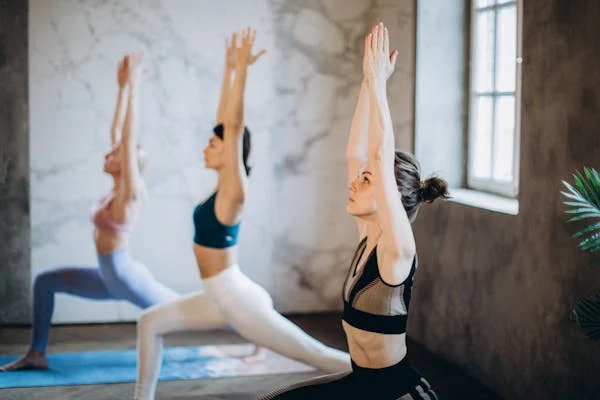
As you focus on your breathing, keep your knee bent and press your foot firmly between your hands. Slowly lift yourself up and extend your arms overhead, reaching towards the sky, while keeping your chest lifted and shoulders relaxed. Engage your core to stabilize your body and hold the pose for a few breaths. Repeat the same process for the other side of Warrior Pose l. Warrior I is a great pose to cultivate strength, focus, and determination in your practice.
Transition from Warrior l to Baby Cobra,
Baby Cobra Pose, known as Bhujangasana in Sanskrit, is a gentle backbend commonly practiced in yoga. The pose stretches and strengthens the spine, opens the chest, and improves spinal flexibility. It’s often used as a preparatory pose for deeper backbends like Cobra Pose or Upward Facing Dog
Baby Cobra Pose:
- Lie Down: Start by lying face-down on your mat.
- Placement: Place your palms beside your chest, fingers spread wide and elbows close to your body.
- Legs: Keep the tops of your feet pressing into the mat.
- Inhale: As you inhale, gently lift your upper body, using your back muscles while keeping your lower ribs on the floor.
- Elbows: Ensure your elbows are bent and close to your body.
- Shoulders: Roll your shoulders back and down away from your ears.
- Neck: Keep your neck long and in line with your spine, gaze softly forward or slightly upward.
- Hold: Hold the pose for a few breaths, continuing to breathe deeply and evenly.
- Release: Exhale as you slowly lower your chest back to the mat and rest your forehead on the floor.
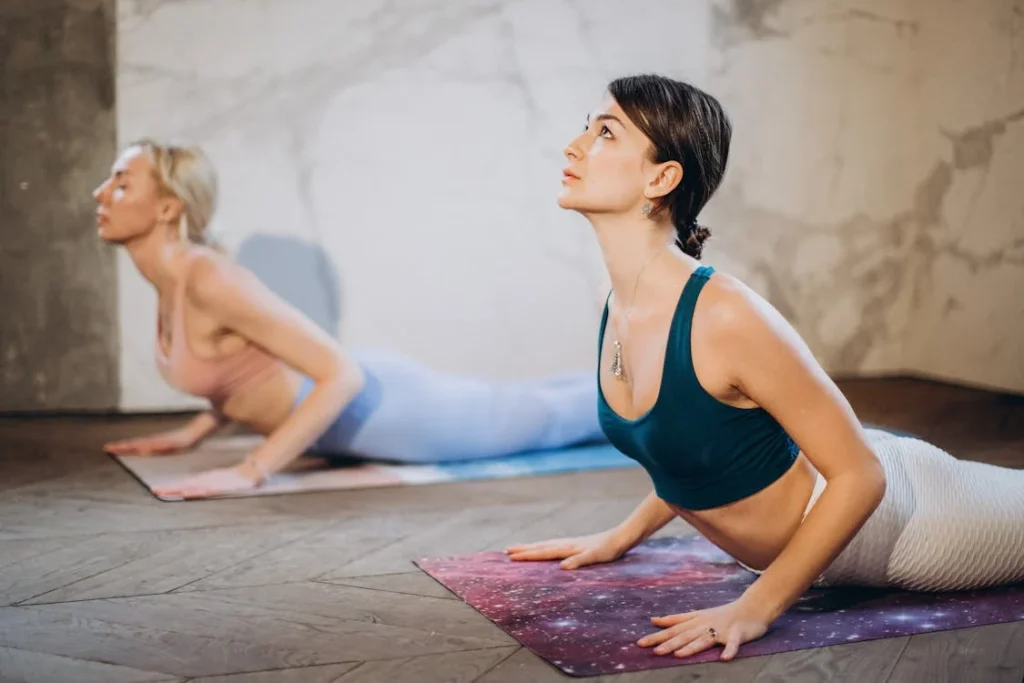
When transitioning from Warrior I to Baby Cobra, start by gently lowering your hands to the mat on each side of your front foot as you release your back heel. You will then be in a plank position. In plank position, using your toes, shift your weight forward onto your hands, gently lower your chest towards the mat while extending your legs behind you. With a gentle lift of your upper body, draw your shoulders back, and arch your back, keeping your elbows close to your sides. Your gaze should be forward, promoting a gentle stretch to your lower back.
Transition from Baby Cobra to Child’s Pose:
Child’s Pose, known as Balasana in Sanskrit, reflects its nurturing and restful nature, similar to the fetal position. This pose gently stretches the back, hips, thighs, and ankles, offering a soothing release and relaxation for the body. Often used as a resting pose in yoga practices, it provides a calming stretch and deep relaxation.
Balasana (Child’s Pose):
- Kneel on Mat: Knees wide, big toes touching.
- Sit Back: Lower hips toward heels.
- Extend Arms: Reach arms forward on the mat.
- Rest Forehead: Rest forehead on the mat or a block.
- Breathe Deeply: Inhale and exhale deeply.
- Hold Pose: Relax in this pose.
- Release: Slowly come up to a kneeling position.

While transitioning from Baby Cobra, exhale and lower your chest towards the mat. Place your hands or stretch the fingers towards the top edge of the mat. Shift your hips gently pulling back towards your heels while extending your arms forward. Rest your forehead on the mat or a block, allowing your entire body to relax. Breathe deeply and hold the pose, focusing on releasing any remaining tension. To come out, gently lift your torso and walk your hands back towards your body, returning to a kneeling position
From this gentle resting pose, we end the session with Corpse Pose to fully relax and rejuvenate the body.
Corpse Pose:
Transitioning from Child’s Pose to the final relaxation pose of Corpse Pose allows for a complete release of tension and stress in the body. Corpse Pose, also known as Savasana, is a vital part of any yoga practice as it provides an opportunity for deep relaxation and rejuvenation. This pose involves lying flat on your back, closing your eyes, and focusing on your breath. It is a time to let go of any thoughts or worries and simply be present in the moment.
Corpse Pose (Shavasana):
- Lie Down: On your back, feet hip-width apart, arms relaxed by your sides, palms facing up.
- Close Your Eyes: Soften your gaze or close your eyes gently.
- Relax Your Body: Let your body sink into the mat, releasing any tension.
- Focus on Breath: Inhale and exhale deeply, allowing your breath to become natural.
- Clear Your Mind: Let go of any thoughts, worries, or distractions.
- Stay Present: Remain in this pose for several minutes, staying aware and relaxed.
- Gently Awaken: When ready, deepen your breath, wiggle your fingers and toes, and slowly roll onto your side.
- Come to Sitting: Press yourself up to a comfortable seated position.

By practicing Corpse Pose at the end of your yoga session, you can fully integrate the benefits of your practice and leave feeling refreshed and balanced.,
Practice Daily for 2 weeks
Incorporate the power of these 6 beginner-friendly yoga poses into your daily routine to kickstart your journey towards physical and mental wellness. Remember to listen to your body, breathe deeply, and embrace the transformative effects of your practice. So rise up into Mountain Pose, stretch into Downward-Facing Dog, embody strength in Warrior I, gently arch in Baby Cobra , surrender in Child’s Pose, and find peace in Corpse Pose. Start this sequence for two weeks, then gradually introduce new poses each week. As you flow through these poses, may you find balance, clarity, and rejuvenation.
Remember that every step on your mat is a step towards a healthier, more balanced you.
Stay tuned for our next blog post, where we’ll dive deeper into your practice with new poses designed to enhance your journey. Keep practicing, keep breathing, and let your yoga journey unfold with intention and joy. Namaste.
